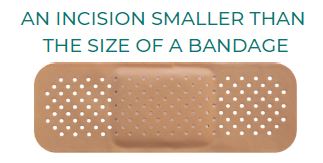Due to the amount of pressure they withstand, the spinal joints are particularly prone to developing arthritis. Generally speaking, spinal arthritis occurs in the facet joints, or vertebral joints. These joints connect vertebrae together and are located in rear of the spine. Facet joints facilitate movement in the spine such as bending, twisting and stretching, but these joints often thicken and harden with age, which can lead to osteoarthritis of the spine.
Typically, when a person has been diagnosed with degenerative arthritis of the spine it means that cartilage breakdown has occurred on his or her facet joints. Arthritis of the facet joints can cause slight to severe pain. This pain could potentially radiate along affected nerves to other areas of the body such as the buttocks or upper thighs. As time passes, progressive joint degeneration creates even more frictional pain. The resulting back pain and stiffness decreases back motion and flexibility, particularly when standing, sitting and walking.
Spinal osteoarthritis may also be associated with degenerative disc disease (DDD), a gradual deterioration of the shock-absorbing discs between the vertebrae of the spine, and is confused with DDD in some cases. This is because osteoarthritis and degenerated discs are often found together.











